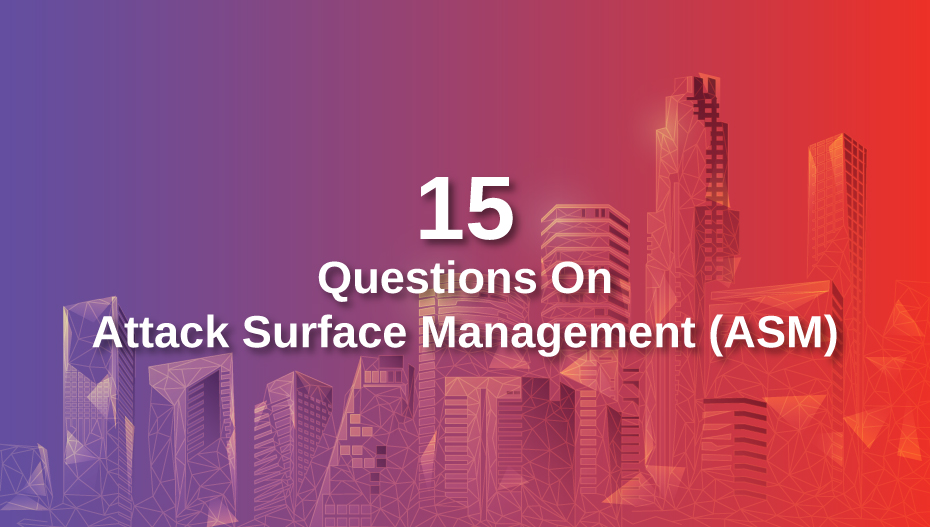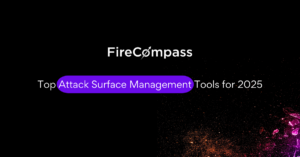Organizations have to manage a growing attack surface as their technological environments become increasingly complex and dispersed to respond to changing business demands. Thus the role of Information security teams, responsible for identifying and managing an attack surface across internal and external digital assets, becomes more critical than ever.
For the security team, it is essential that they have clear internal visibility into the security hygiene of the organization so that they can establish and maintain a strong security posture. And this is where Attack Surface Management Solutions play a vital role.
In this blog, we will try to answer the most common Attack Surface Management related questions that every security team member should know.
What is an External Attack Surface?
The External Attack Surface is the total number of entry points (Attack vectors) where an adversary can attempt to gain entry to your network or systems. It usually includes things such as IP addresses, netblocks, domains and subdomains, open ports and services, associated vulnerabilities, external facing web applications and APIs and more. It really is anything that could potentially be leveraged by an adversary to use in an attack.
What is Attack Surface Management/Discovery?
Attack Surface Management/Discovery is a combination of process and technology to discover the external-facing attack surface. This is usually done from a zero or limited knowledge perspective to best help identify those items that may currently be unknown to an organization.
Why is External Attack Surface Management important?
The goal of External Attack Surface Management (EASM) Is ultimately to help you understand and minimize the potential things that can provide an adversary with things they can leverage in a potential attack against your organization.
What is Attack Surface Analysis or Evaluation?
Beyond the simple discovery, it is the ability to analyze that attack surface – a process to evaluate and analyze asset attributes to determine if an asset is truly risky, vulnerable or behaving in an anomalous manner that can help prioritize risks associated with an attack surface.
What is the difference between an Attack Vector and Attack Surface?
In the context of an attack surface discussion, an Attack Vector is a method used by an adversary to gain unauthorized access to a network or system whereas an Attack Surface is the total number of attack vectors where an adversary can attempt to gain entry to your network or systems.
What is Attack Surface Mapping and how is it done?
The actual process of mapping out an attack surface is a combination of passive and active data gathering techniques merged with both data science and human-in-the-loop logic applied.
The FireCompass EASM tool conducts internet-based recon on 4 Billion+ IPs and automatically discovers the digital attack surface including unknown exposed database/cloud buckets, code leaks, leaked credentials, risky cloud assets, and risky open ports etc. By using AI & ML algorithms, the FireCompass platform attributes all your digital assets and provides a near-real-time view of your digital attack surface.
How do you reduce your attack surface?
Through the information provided by a good EASM tool, you can start to reduce your external attack surface by Identifying unnecessary open ports/services, misconfigured assets & all possible vulnerabilities from known and unknown external-facing assets to create an inventory of the digital assets which are not in use or not required.
What are the primary capabilities of an Attack Surface Management Tool?
A good solution should be performing a discovery leveraging many different sources of passive data as well as using active reconnaissance techniques. This will allow the widest net to be cast in order to identify truly unknown assets. In addition, since your attack surface is an ever-changing entity, any solution you choose should continuously monitor for any changes and have a way to surface those changes.
What are the common use cases of Attack Surface Management?
Most common use cases of Attack Surface Management include digital asset discovery and inventory, reduction of risky exposures, cloud security, data leakage detection, subsidiary risk monitoring, supply chain/third-party risk monitoring and merger and acquisition (M&A) risk assessment.
Why Continuous Attack Surface Monitoring is important?
The Attack Surface is highly dynamic for most organizations. Additionally, the rapid adoption of cloud-based services and open-source software to meet business demand is increasing cybersecurity vulnerabilities. So continuous monitoring of the attack surface is important to identify and discover the risks in near real-time.
How do Attack Surface Management Tools help security professionals?
Attack Surface Management Tools help security professionals to understand and reduce unnecessary exposure to the internet and public domain that could be exploited and prioritize the most critical risks to be remediated. Here are a few reasons why security professionals are using Attack Surface Management tools:
- Rapid shift to cloud infrastructure and SaaS services
- Increased adoption of Remote working and satellite offices
- Adoption of IoT Technologies
- Streamline red teaming exercises
- Provide updated target lists for vulnerability scanning programs
Why External Attack Surface Management must be part of Enterprise Vulnerability Management Strategies?
External Attack Surface Management (EASM) solutions can automate the process of discovering the entire inventory of internet-exposed assets. Without a clear knowledge of assets, organizations can’t put them under a vulnerability management program.
In addition to helping provide an accurate target list for your scanners, an EASM platform will also independently identify and prioritize vulnerabilities and suggest steps to eliminate them.
EASM solutions also enable cross-enterprise vulnerability assessments, which may include exposed digital assets belonging to subsidiaries that may pose a risk to the connected parent enterprise.
How can you reduce false-positive noise?
Most Attack Surface Management tools do discovery via passive attack surface discovery methods. This creates a lot of false-positive noise. FireCompass platform validates those risks to reduce the false positives noise and prioritises risks so the organization can attend to the most critical risks first.
How External Attack Surface Management is different from DRP & Security Rating Services?
- EASM solution helps organizations to Identify, Attribute & Analyze external-facing assets whereas DRPS solutions improve an organization’s ability to detect and respond to digital threats.
- EASM focuses on the security impact on the organization whereas DRPS focuses on Business Resilience.
- Both EASM and Security Rating solutions help organizations to discover the risks from external-facing assets/internet-exposed infrastructure (also includes third-party risks) but the Attack Surface Management solution validates those risks to reduce false positive noise and provide actionable insights
What are the main Components of Exposure Management
Attack SurfaceVulnerabilityValidationInternalPrioritizationTargettedExternalClassificationComprehensiveDigital RisksAwarenessCompliance





